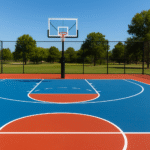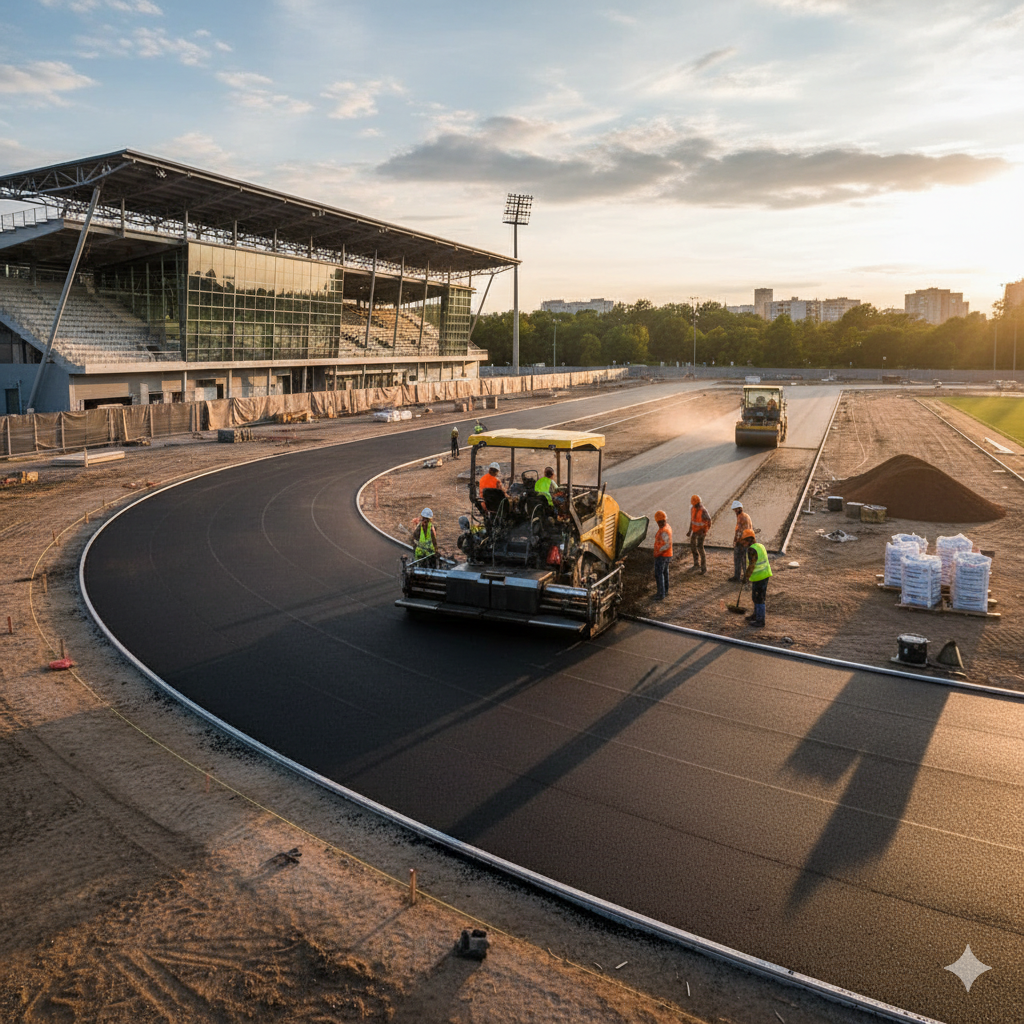Introduction
Running tracks are more than just loops of pavement—they’re engineered platforms for performance, safety, and fairness. From schools and colleges to international sports arenas, constructing a high-quality running track is essential for training and competitive events.
Whether you are planning a school athletics track or a world-class Olympic facility, the dimensions, materials, and construction process play a crucial role in ensuring durability, safety, and compliance with international standards.
What is a Standard Running Track?
A standard running track is typically 400 meters in length and follows strict international rules set by World Athletics (formerly IAAF). These rules guarantee consistency so athletes compete under equal conditions worldwide.
Key Dimensions of a Standard Running Track
-
Total Length: 400 meters (measured in Lane 1).
-
Number of Lanes: 6–9 lanes (8 is standard for official competitions).
-
Lane Width: 1.22 meters per lane.
-
Area Required: Approximately 176.91m x 92.5m for a full-sized track.
Accurate measurements ensure fair competition, precise timing, and globally comparable performance.
Track Layout and Markings
A standard track balances straights and curves for smooth running:
-
Straights: Two stretches of 84.39 meters.
-
Curves: Two semicircular bends of 115.61 meters.
-
Markings: Staggered starting lines for lane fairness and event-specific markings.
Proper line marking is essential to prevent unfair advantages and maintain competition integrity.
Materials Used in Running Track Construction
Modern tracks use high-performance materials for durability, grip, and injury prevention:
-
Polyurethane Flooring: Popular, weather-resistant, and long-lasting.
-
Rubberized Surfaces: Shock-absorbent and durable.
-
Eco-friendly Composites: Sustainable and performance-oriented.
The choice of material affects athlete safety, speed, and comfort, making it a critical decision during construction.
Construction Process of a Running Track
-
Planning and Site Selection – Choose a flat, well-drained location.
-
Base Preparation – Lay asphalt or concrete foundation for stability.
-
Installing Track Flooring – Apply polyurethane, sandwich, or prefabricated systems.
-
Line Marking and Finishing – Add lane numbers, event-specific markings, and curves with precision.
Every stage requires professional expertise to ensure safety, durability, and compliance with standards.
Running Track Flooring Options
-
Polyurethane System: Durable, weather-resistant, and ideal for competitive use.
-
Sandwich System: Combines granules and polyurethane layers for extra cushioning.
-
Prefabricated Flooring: Pre-made sheets for fast installation and consistent quality.
Selecting the right flooring impacts athlete performance and longevity of the track.
Standards for Running Track Construction
A certified running track manufacturer ensures the facility meets World Athletics requirements. Tracks that do not meet these standards cannot host international competitions.
Cost of Running Track Construction
Factors influencing cost:
-
Type of surface (polyurethane vs. prefabricated).
-
Number of lanes.
-
Site preparation requirements.
-
Labor and location charges.
Estimated Cost in India: ₹3.5 – ₹7 crore
Global Estimate: $500,000 – $1 million
Benefits of Professional Running Track Construction
-
Ensures durability and long-term performance.
-
Accurate lane and measurement standards.
-
Compliance with international competition rules.
-
Safety for athletes.
-
Enables hosting national and international competitions.
Maintenance of Running Tracks
-
Sweep and clean regularly to remove dust and debris.
-
Inspect for cracks, uneven surfaces, or wear.
-
Resurface every 8–10 years for synthetic tracks.
-
Proper maintenance extends track life and ensures safety.
Challenges in Running Track Construction
-
Weather Conditions: Rain or extreme heat can delay installation.
-
Budget Constraints: Quality materials and installation are expensive.
-
Material Availability: Imported flooring may face delays.
Future Trends in Running Track Flooring
-
Eco-friendly materials for sustainability.
-
Advanced cushioning systems for injury prevention.
-
Smart tracks with embedded sensors to track performance metrics.
Conclusion
Constructing a high-quality running track is more than laying a surface—it’s about precision, safety, and performance. Whether for schools, colleges, or international competitions, investing in certified materials, professional installation, and proper maintenance ensures a long-lasting facility that supports athletes in achieving excellence.https://www.sports-facility.in/index.php
FAQs
-
What is the length of a standard running track?
400 meters, measured in Lane 1. -
How many lanes does a professional track have?
Typically 8 lanes, each 1.22 meters wide. -
Which material is best for running track flooring?
Polyurethane or sandwich system for durability and performance. -
How long does it take to construct a track?
Usually 4–6 months, depending on site and preparation. -
Why are lane widths important?
Equal lane widths ensure fairness, accurate timing, and compliance with international standards




